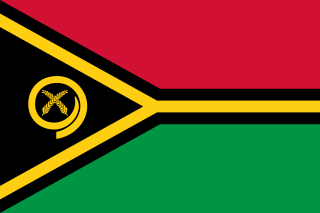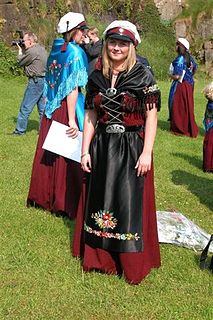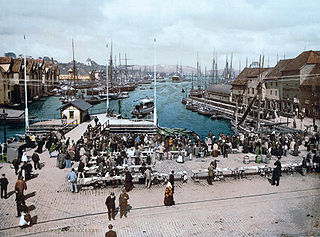Statistics Norway demographic statistics
| Historical population | ||
|---|---|---|
| Year | Pop. | ±% |
| 1769 | 63,976 | — |
| 1801 | 76,055 | +18.9% |
| 1855 | 126,475 | +66.3% |
| 1900 | 161,494 | +27.7% |
| 1950 | 172,710 | +6.9% |
| 1960 | 185,302 | +7.3% |
| 1970 | 203,226 | +9.7% |
| 1980 | 225,429 | +10.9% |
| 1990 | 240,906 | +6.9% |
| 2000 | 257,869 | +7.0% |
| 2010? | 279,024 | +8.2% |
| 2020? | 308,220 | +10.5% |
| 2030? | 337,339 | +9.4% |
| Source: Statistics Norway . | ||
The following demographic statistics are from the Statistics Norway, unless otherwise indicated.

Statistics Norway is the Norwegian statistics bureau. It was established in 1876.
Age and sex distribution
Age structure
Norway
(2005 est.)
0–14 years: 19.7% (male 466,243; female 443,075)
15–64 years: 65.6% (male 1,234,384; female 1,486,887)
65 years and over: 14.7% (male 285,389; female 392,331)
Southern Norway
(2009 est.)
0–14 years: 19.8% (male 27,734; female 26,836)
15–64 years: 66.1% (male 92,364; female 89,516)
65 years and over: 14.1% (male 17,311; female 22,831)
Population
- 257,869 (January 1, 2000)
- 277,250 (July 1, 2009)
- Population growth
- 19,381 (7.5%)
In biology or human geography, population growth is the increase in the number of individuals in a population. Many of the world's countries, including many in Sub-Saharan Africa, the Middle East, South Asia and South East Asia, have seen a sharp rise in population since the end of the Cold War. The fear is that high population numbers are putting further strain on natural resources, food supplies, fuel supplies, employment, housing, etc. in some of the less fortunate countries. For example, the population of Chad has ultimately grown from 6,279,921 in 1993 to 10,329,208 in 2009, further straining its resources. Vietnam, Mexico, Nigeria, Egypt, Ethiopia, and the DRC are witnessing a similar growth in population.
Population - comparative
slightly larger than Vanuatu and Barbados, but slightly smaller than Iceland and Maldives.

Vanuatu, officially the Republic of Vanuatu, is a Pacific island country located in the South Pacific Ocean. The archipelago, which is of volcanic origin, is 1,750 kilometres (1,090 mi) east of northern Australia, 540 kilometres (340 mi) northeast of New Caledonia, east of New Guinea, southeast of the Solomon Islands, and west of Fiji.

Barbados is an island country in the Lesser Antilles of the West Indies, in the Caribbean region of North America. It is 34 kilometres in length and up to 23 km (14 mi) in width, covering an area of 432 km2 (167 sq mi). It is situated in the western area of the North Atlantic and 100 km (62 mi) east of the Windward Islands and the Caribbean Sea; therein, Barbados is east of the Windwards, part of the Lesser Antilles, roughly at 13°N of the equator. It is about 168 km (104 mi) east of both the countries of Saint Lucia and Saint Vincent and the Grenadines and 400 km (250 mi) north-east of Trinidad and Tobago. Barbados is outside the principal Atlantic hurricane belt. Its capital and largest city is Bridgetown.

Iceland is a Nordic island country in the North Atlantic, with a population of 348,580 and an area of 103,000 km2 (40,000 sq mi), making it the most sparsely populated country in Europe. The capital and largest city is Reykjavík, with Reykjavík and the surrounding areas in the southwest of the country being home to over two-thirds of the population. Iceland is volcanically and geologically active. The interior consists of a plateau characterised by sand and lava fields, mountains, and glaciers, and many glacial rivers flow to the sea through the lowlands. Iceland is warmed by the Gulf Stream and has a temperate climate, despite a high latitude just outside the Arctic Circle. Its high latitude and marine influence keep summers chilly, with most of the archipelago having a tundra climate.
Population growth rate
1.31% (in 2008)
Population growth rate - comparative
slightly larger than Brazil, but slightly smaller than Oregon.

Brazil, officially the Federative Republic of Brazil, is the largest country in both South America and Latin America. At 8.5 million square kilometers and with over 208 million people, Brazil is the world's fifth-largest country by area and the fifth most populous. Its capital is Brasília, and its most populated city is São Paulo. The federation is composed of the union of the 26 states, the Federal District, and the 5,570 municipalities. It is the largest country to have Portuguese as an official language and the only one in the Americas; it is also one of the most multicultural and ethnically diverse nations, due to over a century of mass immigration from around the world.

Oregon is a state in the Pacific Northwest region on the West Coast of the United States. The Columbia River delineates much of Oregon's northern boundary with Washington, while the Snake River delineates much of its eastern boundary with Idaho. The parallel 42° north delineates the southern boundary with California and Nevada. Oregon is one of only three states of the contiguous United States to have a coastline on the Pacific Ocean.
Total fertility rate
1.96 children born/woman (2007)
Language
Literacy
definition: age 15 and over can read and write
total population: 100%
male: NA%
female: NA%








